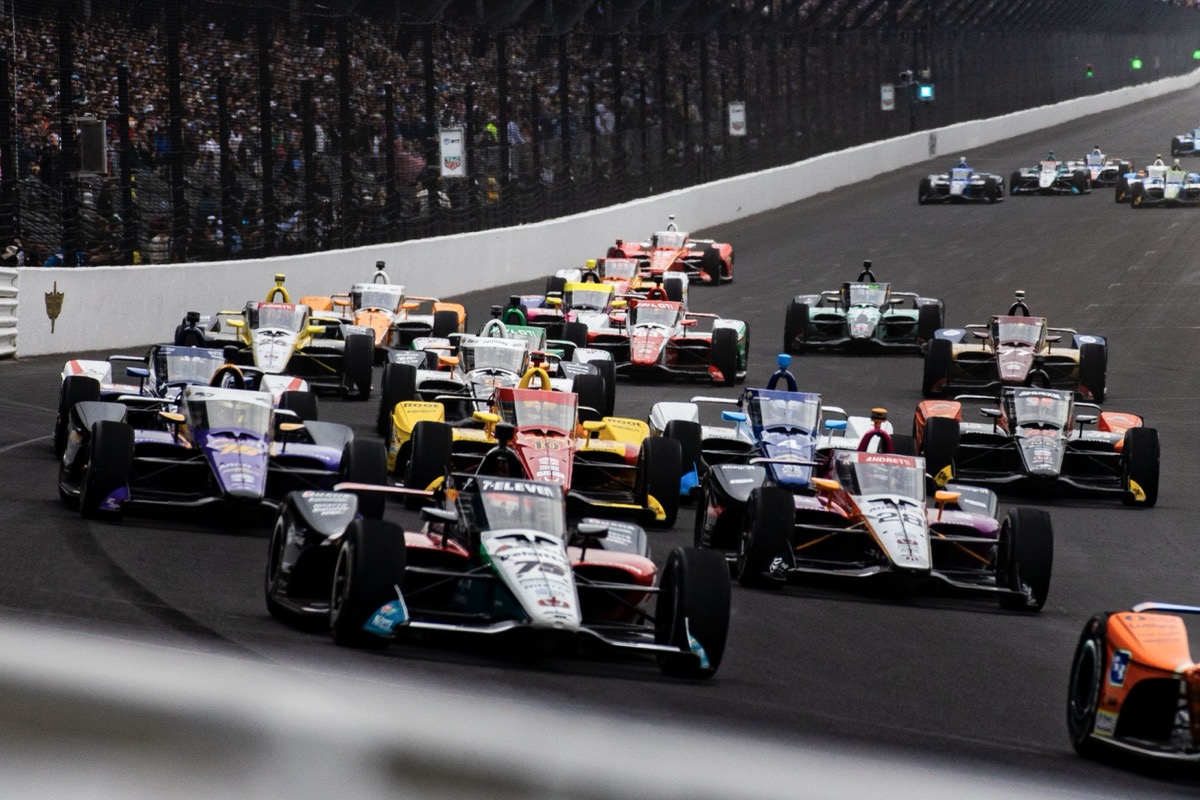Published 22/10/2025 à 09:00
Michael Duforest
Comment on this article! 0
© Penske Entertainment: Amber Pietz
In Indianapolis this week, the future of theIndyCar in the very short term is written, with the presence of the winner of the Indy 500 and four-time champion of the discipline Álex Palou (Chip Ganassi Racing) this Tuesday, as well as Pato O’Ward (Arrow McLaren). The two drivers drove on the four-kilometer oval to collect data for tire supplier Firestone, following the laying of new asphalt in Turn 2 at the end of September. This operation also allowed the rediscovery of some of the 3,5 million bricks laid in 1909 on the Speedway track, which was originally covered with leveled and compacted earth, covered with gravel mixed with taroid, a solution of tar and oil.
Along with two of the most prominent drivers in the championship in recent years, veterans Alexander Rossi (winner of the Indy 500 in 2016) and Takuma Sato (two-time winner, in 2017 and 2020), were also in the race and will take to the track again this Wednesday. For the ECR and Rahal Letterman Lanigan drivers, it’s about preparing for the long-term future of the championship, with the first preparations for the 2028 machines, which will replace the Dallara DW12s that first saw the track in racing in 2012.
Rossi and Sato are working with the championship to develop the brakes and dampers for the next generation of IndyCars. The braking systems, supplied by Performance Friction Corporation since 2018, are expected to remain supplied by the same brand when the next chassis arrives. These initial tests thus serve as the start of development for the supplier, which will still have two full years to refine its product.
The shock absorber tests are a new development that could permanently change the championship. Indeed, in an era where single-seaters are all supplied by Dallara, with the same tires, suspension, gearboxes, and only two engine manufacturers, shock absorbers have become one of the last bastions of innovation in IndyCar over the past decade.
The stables are in fact free to develop their own solutions. This had also earned Romain Grosjean a certain astonishment during his first test session with Andretti in 2022. The Frenchman, who had spent his first season in IndyCar with Dale Coyne Racing, was surprised by the setting data that was put in place on his carBut with a completely different shock absorber package to those of his first team, the “phoenix” did not have the slightest problem with settings that seemed “exotic”.
The teams have invested heavily in systems that test the shock absorbers and suspensions of their single-seaters, using shaker benches. Andretti’s work on the shock absorbers is also a factor in the excellent performance of the Dan Towriss-owned team on street circuits, which are extremely bumpy and require the most advanced suspension package possible.
By considering replacing this development with standard shock absorbers, IndyCar would be depriving itself of a new area of differentiation between the different teams. An area that does not, however, harm competition in the championship, given that the entire field is within a little over a second of each other in practice and qualifying. For the moment, no area of the new car has been publicly announced as open to development by the teams. These could thus become simple operating teams in a few years…
ALSO READ > Hitech TGR confirms Colton Herta’s arrival in Formula 2
Collector Ferrari Legendary Duos
Autohebdo Subscriptions
Collector Jules Bianchi
Comment on this article! 0
I agree to receive your emails and confirm that I have read your privacy policy and legal notices.
Continue reading on these topics:
IndyCar
0 Comment (s)











